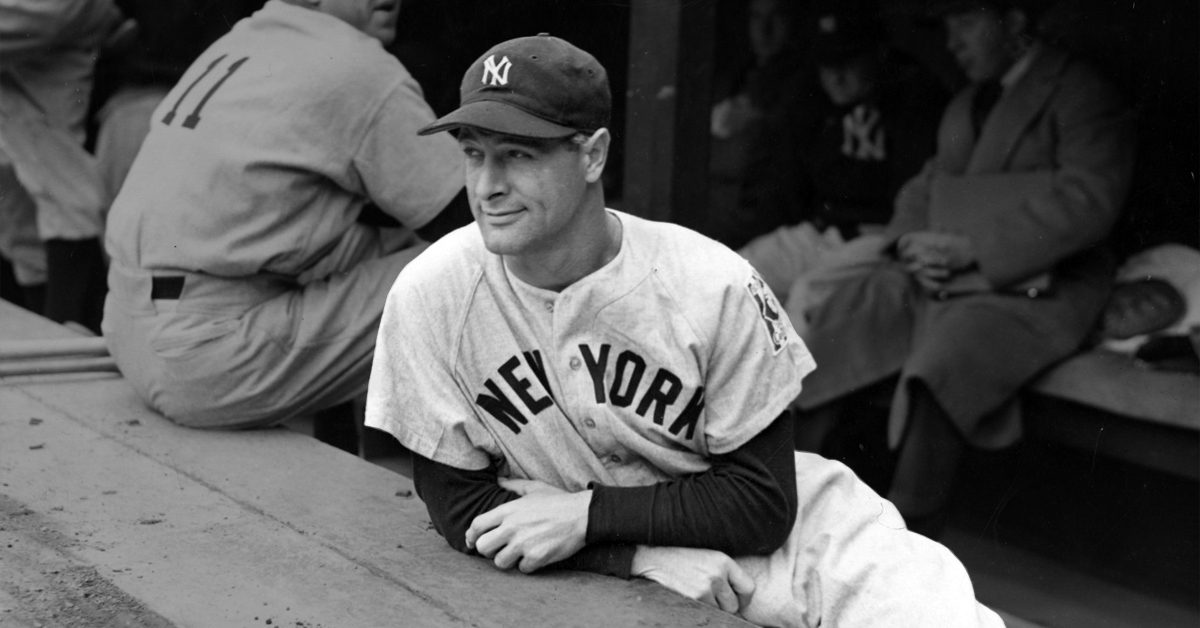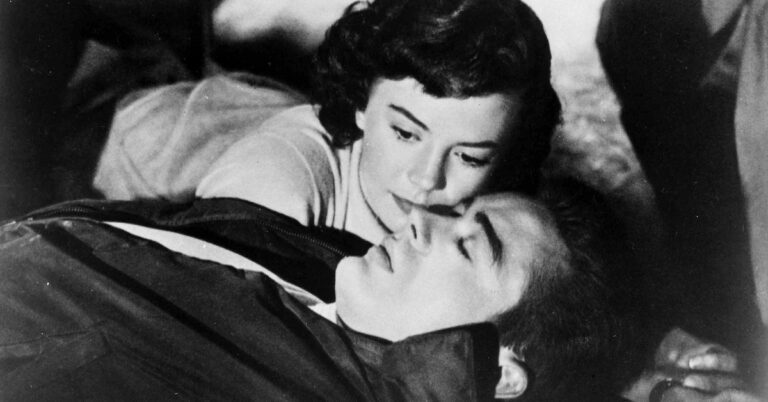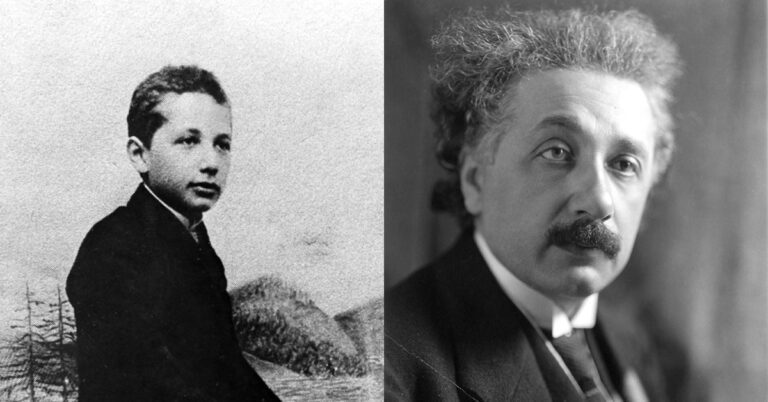The Pride of the Yankees (1942) starring Gary Cooper was the superb screen biography of baseball’s Lou Gehrig. Samuel Goldwyn produced this four-star classic motion picture, top tier in every department, and nominated for eleven Academy Awards.
Gehrig, beloved Yankee star, and the indomitable idol of millions known as “The Iron Horse,” had passed the previous year. He was a victim of the uncommon fatal malady known as amyotrophic lateral sclerosis, or ALS, a rare, incurable form of multiple sclerosis, painfully referred to this day as Lou Gehrig’s Disease. Mr. Gehrig was but 38 years old.
Only four years before The Pride of the Yankees was playing in movie theaters across the land, the legendary Lou Gehrig starred as himself, displaying genial charm in a sadly ironic B-Western called Rawhide (1938). Sol Lesser produced it, Twentieth Century-Fox distributed it, and the nominal star was the former big band singer, Smith Ballew, then appearing in a series of sagebrushers for Fox. But Gehrig stole the picture; he was really the star attraction and the whole show.
Theater poster art carried this ad line: “Batting against bullets…the ‘Iron Horse’ of baseball becomes the West’s man of steel and helps your favorite singing cowboy ride the rustlers off the range!”
Another one: “Lou Gehrig…idol of baseball trades his bat for a gat.”
And “Smith Ballew slinging lead! Lou Gehrig swinging fists!”
One more: “The slugging star of the New York Yankees teams up with singin’, scrapping’ Smith Ballew…to give you your greatest action western!”
The Hollywood trade paper Variety stated in its review of Rawhide, “Gehrig, not just posed as most outsiders are when put into pictures, can act, and, should his baseball career come to an end, he might develop into a Bill Boyd or Buck Jones type. Photographing well, he has both the personality and the voice to insure a stamp of approval by producers as well as audiences. He’s the accepted western type.”
From the notice in The New York Times: “Hiding ‘neath a seven-gallon hat and armed with a six shooter, Lou Gehrig is strutting his stuff at the Globe in Rawhide, a musical Western which undoubtedly will prove satisfactory to baseball fans and followers of the out-of-door action drama. Larrupin’ Lou dominates the show, but always he is Gehrig the ball player.”
Rawhide (the name of the town where Gehrig’s ranch is located in the film) has one unique scene for a B-Western. Battling a so-called cattleman’s protective association, the rough and tumble Gehrig takes on a bunch of the picture’s villains in a pool hall by throwing billiard balls at them with unerring accuracy!
In another scene, the personable Gehrig joins singing cowboy star Ballew in a song. The rest of the time, Gehrig betrays a slight New York accent in delivering lines, which was okay because his character, really Lou Gehrig himself, is supposed to be a ball player with the New York Yankees who comes West between seasons to help his sister battle cattle racketeers. Actually, at the outset, he explains to reporters that he’s quitting baseball — ironically predicting his own unfortunate future.
Despite offering an impressive screen presence, the famed Yankees first baseman never made another movie. This was his lone film appearance. In 1938 no one could have predicted the dramatic turn his career and life were about to take. He had only three and one-half years to live. During the 1938 baseball season, Gehrig started off as usual, but his numbers fell off considerably as the year went along.
In 2006 medical researchers conducted an investigation into both Gehrig’s film work during the making of Rawhide, and other photographs of him during the period from 1937 into 1939. Their analysis, as presented in a paper to the American Academy of Neurology, concluded that while atrophy of hand muscles could be ascertained from certain 1939 photographs, there was no visible evidence of this abnormality in his performance for the film Rawhide, which was shot in January of 1938.
While The Pride of the Yankees tells a sad story, Rawhide offers the diversion of pure entertainment and the fun chance to get to know the great Lou Gehrig, when still in his prime.




